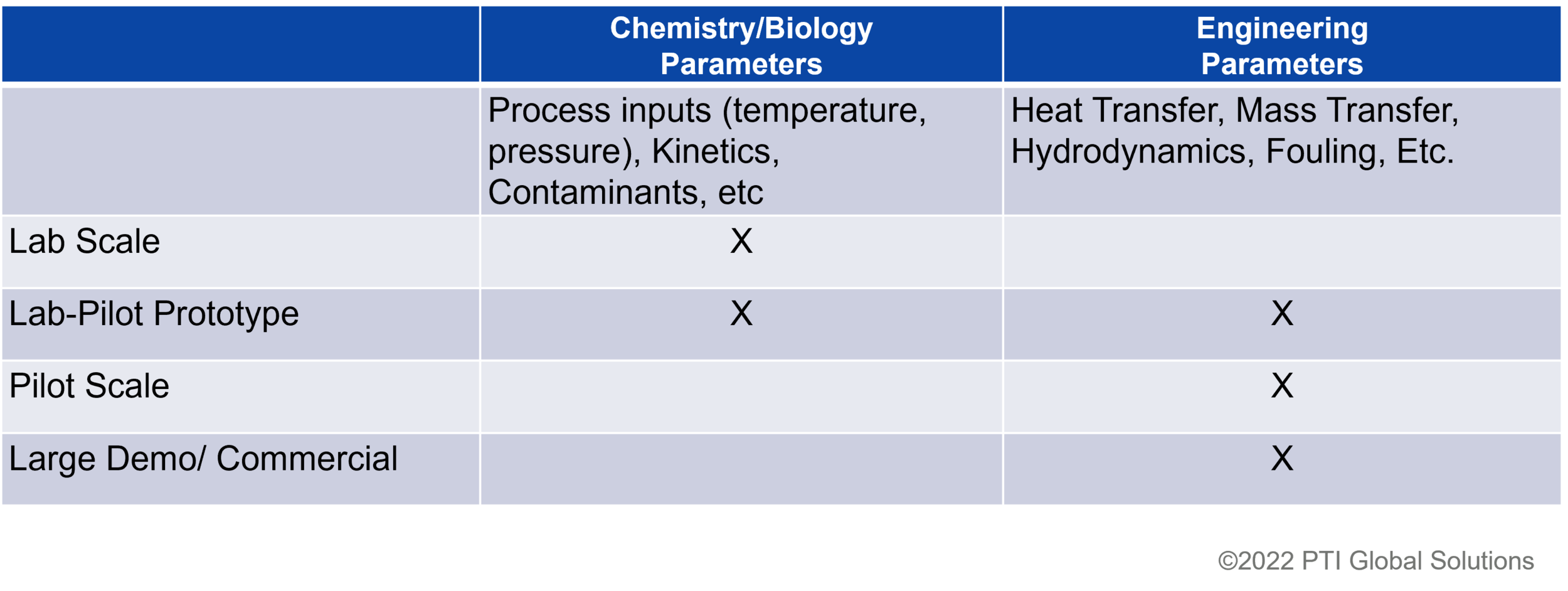We often hear that ‘if it was easy, anyone could do it’. We can say something similar about the risk of new technology. Developing a new technology is inherently filled with risk—if there was no risk, anyone would do it. While it may be possible to reduce risk to nearly zero, we also want to get to scale quickly, so I like to think about this in terms of managing risk while accelerating scaleup. There are three key components to this approach
· Assess Risk. Before starting scaleup, a risk assessment should be completed, evaluating risk areas such as technical, commercial, supply chain, etc. Scoring each risk by impact and probability provides an understanding of the most critical risks, so that these can be prioritized with mitigation steps outlined to support the scaleup effort.
· Decouple scaleup parameters. Next, it is important to decouple and prioritize the scaleup parameters. This effort is informed by the risk assessment. One mistake I see is trying to do everything at every scale. The lab scale is best for evaluating the intrinsic parameters associated with the chemistry/biology of the system, while engineering parameters are better evaluated using calculations and modeling at early stages, with data generation at larger scales. We can use this approach to develop a scaleup plan in which we define critical objectives for each stage—see below for a table outlining this approach.
· Develop multi-scale data in parallel. Finally, multi-scale data is critical to any scaleup effort. A very sequential approach to scaleup—aiming to hit commercial targets at each scale before moving to the next--can reduce risk significantly, but at the expense of timeline. Timeline is a key driver for any new technology, so an alternate approach is to make strategic risk decisions and do much of this work in parallel—advancing to the next scale even while working on proving out commercial targets at the smaller scale. With the risk assessment in place, and a clear scaleup plan, this risk can be managed while accelerating the timeline. In addition, lab and pilot assets can be used for troubleshooting and continuous improvement during demonstration unit campaigns and while running first commercial plants—don’t shut down the lab or pilot just because the demo unit is up and running!
Every organization must make their own evaluation about where they stand on the risk/timeline tradeoff. By applying the principles introduced here informed decisions can be made to develop a risk-managed approach to scaleup.


